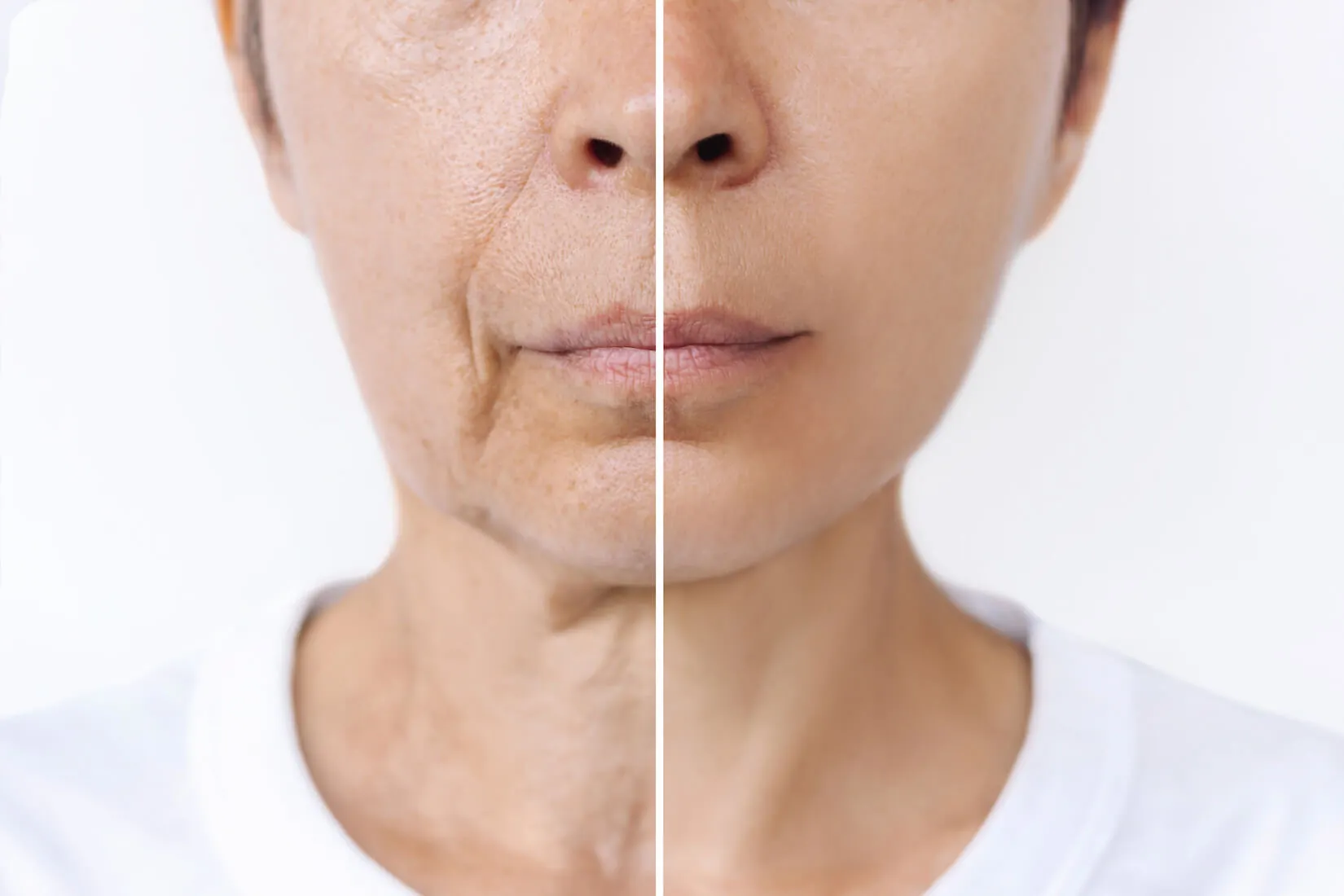As we age, our facial skin tends to sag and develop deep wrinkles. While this is a natural process, many seek a way to return to the natural, smooth skin they had when they were younger. For this reason, the facelift has become a popular and increasingly common procedure for those seeking comprehensive facial rejuvenation. To help meet the demand for more natural-looking facial rejuvenation procedures, the deep plane facelift has become an ever more popular option as an advanced and highly effective facial surgical procedure.
Here, we will examine a deep plane facelift, how it works, and its unique benefits over traditional facelifts.
Understanding the Deep Plane Facelift
A deep plane facelift is very similar in practice to a traditional SMAS facelift, as both involve carefully planned incisions to rearrange the underlying tissues of the face. Where they differ is in the scope and depth of what they address.
Deep plane facelifts lift and reposition the deeper layers of the face, including muscles, fat, and ligaments. This results in a fuller facial rejuvenation as it addresses the underlying causes of facial aging. This is in contrast to traditional facelifts, which primarily focus on the skin and superficial layers, often resulting in less natural, shorter-lasting results.
The Science Behind the Facial Plastic Surgery
The anatomy of a deep plane facelift is much more complex than that of a traditional facelift. To put it simply, a deep plane facelift separates the entire superficial layer of the face, including the superficial musculo-aponeurotic system (SMAS), subcutaneous fat pads, and facial ligaments, from the deeper layers. This is typically done by cutting specific ligaments to reposition the deeper facial tissues and improve facial muscle contours, allowing the surgeon to reposition the face into a more natural configuration that avoids the “pulled” look of traditional facelift techniques.
As such, deep-plane facelift techniques are more effective in targeting areas that traditional facelifts have trouble addressing, such as the midface, nasolabial folds, and jawline. The results look much more natural for the patient and last far longer than a traditional SMAS facelift.
Benefits of a Deep Plane Facelift Procedure
- Natural Looking Results: As stated previously, deep plane facelifts achieve smoother and more youthful facial contours without the “pulled” appearance sometimes seen in SMAS facelifts.
- Comprehensive Rejuvenation: Effectively addresses midface sagging, jowls, and deep nasolabial folds.
- Enhanced Volume Restoration: Restores cheek fullness and improves overall facial harmony.
Recovery and Aftercare for Long Lasting Results
As with any surgical procedure, recovery from a deep plane facelift requires time and care. Because the deep plane facelift involves more extensive work on the deeper layers of the face, the recovery period may be slightly longer than that of a traditional facelift.
Typical Risks of Deep Plane Facelift Surgery
While the deep plane facelift is highly effective and generally safe when performed by an experienced surgeon, it carries some risks. Understanding these risks is essential for making an informed decision.
- Swelling and Bruising: These are common and expected after cosmetic surgery. They typically peak in the first week and gradually subside over the next few weeks. However, in some cases, bruising can be more extensive and may last longer until swelling resolves.
- Infection: Although rare, there is a risk of infection at the incision sites. Surgeons typically prescribe antibiotics to minimize this risk, and following post-operative care instructions is crucial.
- Nerve Injury: One of the more serious risks is temporary or permanent nerve injury. This can result in numbness, weakness, or even loss of movement in certain areas of the face. While most nerve issues resolve over time, some may be permanent in rare cases.
- Scarring: Although incisions are carefully placed to minimize visible scarring, some patients may develop more noticeable scars, especially if they have a predisposition to keloid or hypertrophic scars.
- Hematoma: This is a collection of blood under the skin that can occur after surgery. It may require drainage or additional facial plastic surgery to correct. Hematomas are more common in patients with high blood pressure or those who take certain medications.
- Asymmetry: Achieving perfect facial symmetry can be challenging, and there is a risk of minor asymmetries post-surgery. Skilled surgeons work meticulously to minimize this risk, but slight variations can occur.
- Hair Loss: Temporary or permanent hair loss can occur around the incision sites, particularly near the temples or behind the ears. This is usually temporary, but in some cases, it may be permanent.
- Prolonged Swelling: Some patients may experience prolonged swelling that lasts several months. This can delay the final results of the facial plastic surgery, requiring patience during the healing process.
What to Expect During Facelift Recovery:
- Downtime: Patients should plan for about three to four weeks of recovery time before returning to their normal activities. Patients can resume light activities after about two weeks, but patients should avoid strenuous exercise for at least six weeks.
- Final Results: While some improvements may be visible immediately, the final results of the deep plane facelift can take several months to become fully apparent as the swelling continues to subside.
Who Is an Ideal Candidate for Natural Looking Results?
When considering a deep plane facelift, it is important to know who is a good candidate for the procedure. Due to the complexity of the procedure and the need for deeper incisions, the recovery time for deep plane facelifts is often much longer than traditional facelift techniques, so it’s important to know if the results outweigh the necessary downtime.
Patients with significant midface sagging skin, deep folds, or jowling can experience the most direct benefit from improved facial rejuvenation. Likewise, those seeking longer-lasting, natural results can also benefit greatly from deep-plane facelifts, with results often lasting more than 10 years.
It should be noted that considerations like overall health and excess skin elasticity should be considered when deciding on a facelift procedure, as they can have drastic effects on the results of any procedure. Having an earnest conversation with your surgeon can help set realistic expectations so that all involved can achieve the best results.
Why Dr. Manish Shah Is the Leading Expert on Deep Plane Facelift Procedure in Denver
Deep plane facelifts offer more complete, natural-looking, and long-lasting results when compared to traditional facelifts. However, they are far more complex procedures, requiring an experienced surgeon to perform properly. Fortunately, Dr. Shah’s extensive experience with Preservation Deep Plane Facelifts renders him uniquely capable to handle this task for prospective patients. With more than 4,000 facelift and neck lift procedures performed, Dr. Manish Shah has the experience and knowledge necessary to tackle this procedure for the best results possible.
If you are looking for a qualified facial plastic surgeon to perform a deep plane facelift, then look no further than Dr. Manish Shah. Contact us today for a free consultation and begin your journey to reclaim your youth.







